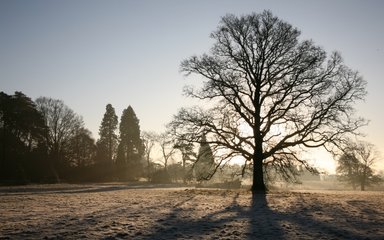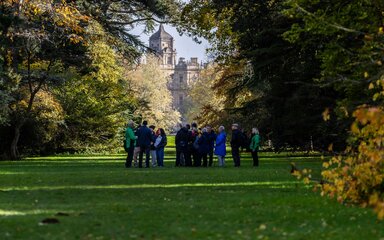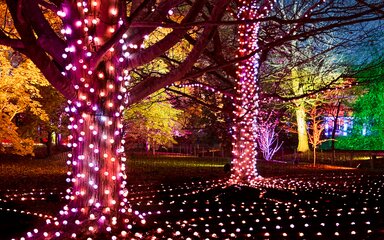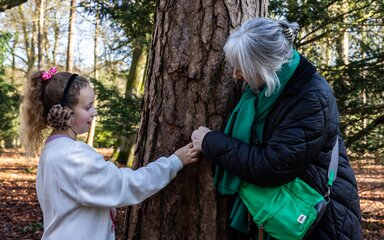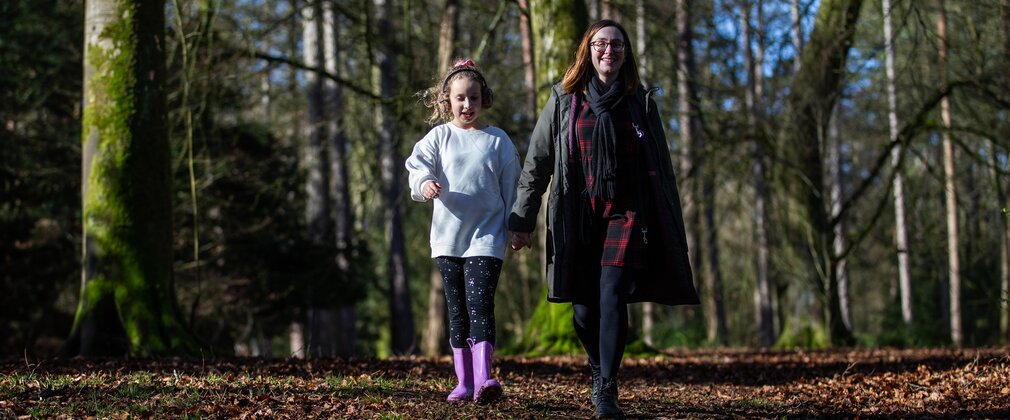
Get outside in winter
The most wonderful thing about trees in winter is we get to stand back, take notice and enjoy the different shapes and textures of them. Winter can still be colourful with different bark decorated with moss & lichens, birds are more easy to spot among the bare branches and if you pack your wellies those puddles look like a lot of fun!

Winter showstoppers
When you think of a conifer what do you expect to see? Conifer means “the one that bears cones” so cones are a good place to start. But some conifers, like juniper and yew, have cones that look just like berries. Most conifers are evergreen, but larch and dawn redwoods lose their leaves each autumn.
There is so much variety in nature and winter is the time for conifers to really show off.
There are around 630 species of conifer in the world and we have just over 280 of them growing here at Westonbirt!
Here’s looking at yew!
Yew trees can be male or female. Male trees are most noticeable in spring with tiny pollen-laden cones clustered under the leaves. You’ll notice female trees in autumn / winter covered with what looks like bright red berries. These are, in fact, cones that have evolved so much that part has become soft and fleshy like a berry. The seed inside, like most other parts of the tree, is poisonous, but the fleshy cone is not.

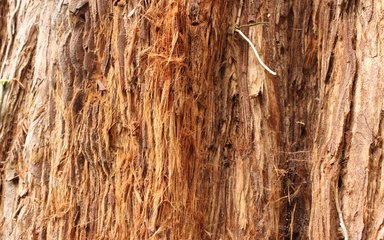
Barking up the right tree
Winter is the time for bark to really show off. Each type of tree displays its own combination of colour, texture, and pattern. There are barks that clean the air, are home to invertebrates, or that change with age. Bark is like a tree’s skin. It is made up of living tissues (the inner layer) and dead tissue (the outer layer).
The coast redwood has thick fibrous bark. It protects the tree from forest fires. Most barks have resins in them which are flammable but redwoods don’t. This means the tree won’t catch on fire. Redwood bark is insect-proof too! It’s rich in tannins which insects don’t like to eat.
Silhouette spotting
The shape that a tree’s trunk and bare branches makes against the sky is called a silhouette. Deciduous trees prepare themselves for winter by losing their leaves in autumn. The tree withdraws sugars and water from the leaves. Next it grows a waterproof skin, where the leaves were attached, to seal the water inside. The tree then waits out the winter before growing fresh leaves in spring. Winter is the perfect time to take notice of a trees intricate shape!
